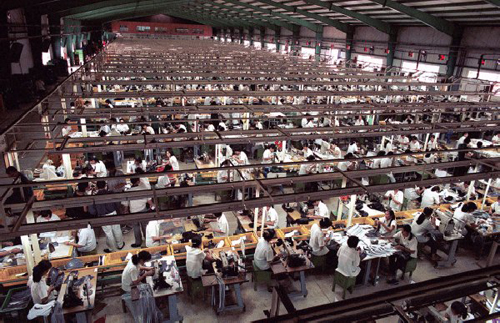
SCP-1700
Debtshop

Recovered image from before raid on SCP-1700-C-3
Special Containment Procedures
As of 6/17/19██, SCP-1700 is considered to be contained. Although instances of SCP-1700-A are too numerous and widely spread to be fully containable, their relative innocuousness makes a large scale containment effort unnecessary and likely impossible. Any instances found may be brought into containment or destroyed, as the Foundation already possesses adequate samples. Product recalls have been put out, but have proven largely ineffective so far.
SCP-1700-B is to be heavily secured under the guise of a power plant. All corpses that appear inside are to be incinerated, along with their instance of SCP-1700-A. Personnel assigned to SCP-1700-B may request amnestics upon reassignment.
All SCP-1700-C structures are to be cordoned off, and any member of the public found within is to be interrogated and administered Class A amnestics. Under no circumstances are any human corpses to be brought within any instance of SCP-1700-C. Any found to have been affected by SCP-1700-C are to be removed from its area of influence and burned. Personnel of level 4 or higher may submit a request to use SCP-1700-C for research or information gathering to the project director.
Mr. Anupam Gunawardena and Mr. Tai-Sing Wang are currently in Foundation custody. They are to be indefinitely contained in Class 2 impoundment cells. Mr. Supreeth Chandrasekaran is currently a fugitive, and his whereabouts are unknown. The Foundation has notified the Indian government that he is a person of interest, and he will be remanded to Foundation control should he be captured.
Description
SCP-1700 is the collective designation for the anomalous objects associated with Fashion Sun Fabrics Limited, a scarf manufacturer primarily located in India, although with some factories located in China and Thailand. Fashion Sun Fabrics Limited came to the attention of the Foundation on the request of the Indian government, which had noticed the anomalous property of SCP-1700-C during a crackdown on sweatshops. Police who participated in the raid were issued Class A amnestics and released, and two of the three owners were apprehended and remanded to the Foundation.
SCP-1700-A are scarves produced by Fashion Sun Fabrics Limited. They are apparently normal, medium-quality silk scarves in a variety of colors and designs. They exhibit no anomalous properties until the death of their owner. Assuming both the corpse and the scarf are reasonably intact, when left unobserved within 24 hours of the death, both will, through unknown means, vanish and reappear at SCP-1700-B.
SCP-1700-B is a large warehouse, containing a chute in which corpses retrieved by SCP-1700-A appear. Before entering Foundation control, they were sorted into trucks which distributed them to the various SCP-1700-C structures. Currently, the chute leads to a system of incinerators, to prevent build-up of corpses.
SCP-1700-C consist of a series of sweatshops, which are set up to produce SCP-1700-A. There are eleven instances of SCP-1700-C, designated SCP-1700-C-1 through SCP-1700-C-11. SCP-1700-C-4 and SCP-1700-C-10 are located in China, SCP-1700-C-2 is located in Thailand, and the remaining instances are located in India. Zoning records show that the buildings had previously been operated as sweatshops, but there is no indication that they demonstrated any anomalous properties before Fashion Sun Fabrics purchased them.
Any intact human corpse, when brought inside SCP-1700-C, becomes animate for so long as it remains within the building. Such cadavers retain memories of their life, and fragments of their personality. No clear mechanism has been found for this. They do not need to eat, drink, sleep, or breathe.
Addendum 1700-36: Excerpt from an interview with Mr. Gunawardena, a week after his capture. Later interviews with Mr. Wang corroborated his information.
Dr. Corman: Why bring in the corpses of people who bought your scarves? Wouldn't it be easier to obtain them locally?
Mr. Gunawardena: Perhaps, but that would attract attention. Our scarves go out all over the world. Many corpses vanishing from just a few provinces is a pattern. The same number across five continents? Just isolated mysteries. Besides, it appealed to Supreeth's sense of irony.
Dr. Corman: What do you mean?
Mr. Gunawardena: You people get so high and mighty about ethical production and worker's rights. Only fair that you should see what you're really talking about.
Dr. Corman: In what way is that fair?
Mr. Gunawardena: Fine, funny. Better?
Dr. Corman: Moving on. In our experiments with the sweatshops, the resurrected corpses seem no more obedient than they were in life. How did you get them to work?
Mr. Gunawardena: Cattle prods, mostly. And occasionally making an example. If worst came to worst, we were selling we could just torch the whole lot of them.
Dr. Corman: The bodies affected by the sweatshop—they can feel pain?
Mr. Gunawardena: Certainly. That's the way we designed it.
Dr. Corman: But controlling them entirely through threats of pain… was that effective?
Mr. Gunawardena: Well, we did have a—what's the phrase—carrot to go with the stick. If they produced five hundred scarves, and didn't try to escape or attack a manager, we let them go.
Dr. Corman: Let them go?
Mr. Gunawardena: Yeah, we take them outside the building so they die again, then burn the body.
Dr. Corman I, uh, see.
